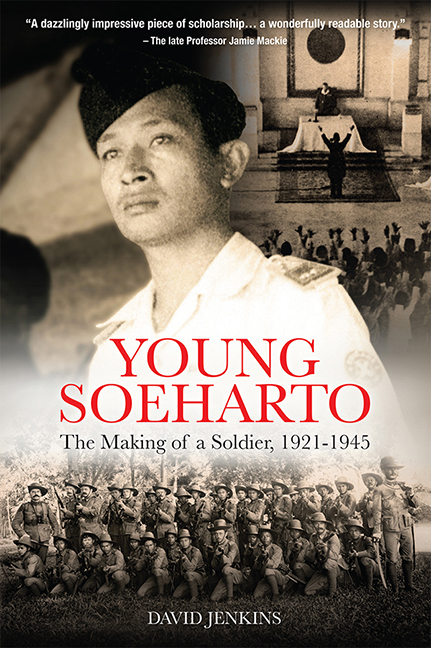Book contents
- Frontmatter
- Contents
- Foreword
- A Note on Spelling and Names
- A Note on Military Organization
- Maps
- List of Charts
- Preface
- Soeharto Family Tree
- 1 “The Sultan came to me and asked about that Family tree”
- 2 “The Cork on which the Netherlands Floats”
- 3 “They Regard Holland as a very Weak Power”
- 4 “An Invisible Motivating Force”
- 5 “What kind of Islam is this?”
- 6 “Soeharto is a Closed Book”
- 7 “I was Suited to the Disciplined life of the Military”
- 8 A Reassuringly Familiar World
- 9 A Policeman for the Japanese
- 10 An Armed Force Conjured out of Nothing
- 11 “The whole Island was Ablaze with Enthusiasm”
- 12 “Don’t make them too Strong!”
- 13 “Soeharto was a Cautious Man”
- 14 “Why did they Choose Soeharto?”
- Glossary and Abbreviations
- Notes
- Acknowledgements
- Bibliography
- Index
- About the Author
1 - “The Sultan came to me and asked about that Family tree”
Published online by Cambridge University Press: 09 October 2021
- Frontmatter
- Contents
- Foreword
- A Note on Spelling and Names
- A Note on Military Organization
- Maps
- List of Charts
- Preface
- Soeharto Family Tree
- 1 “The Sultan came to me and asked about that Family tree”
- 2 “The Cork on which the Netherlands Floats”
- 3 “They Regard Holland as a very Weak Power”
- 4 “An Invisible Motivating Force”
- 5 “What kind of Islam is this?”
- 6 “Soeharto is a Closed Book”
- 7 “I was Suited to the Disciplined life of the Military”
- 8 A Reassuringly Familiar World
- 9 A Policeman for the Japanese
- 10 An Armed Force Conjured out of Nothing
- 11 “The whole Island was Ablaze with Enthusiasm”
- 12 “Don’t make them too Strong!”
- 13 “Soeharto was a Cautious Man”
- 14 “Why did they Choose Soeharto?”
- Glossary and Abbreviations
- Notes
- Acknowledgements
- Bibliography
- Index
- About the Author
Summary
In later life, when he ruled so watchfully over Indonesia, President Soeharto was wont to make two observations about his early childhood. The first was that he was an authentic product of rural Java and that the nine years he spent in the impoverished hamlet of Kemusu, six miles west of the court city of Yogyakarta, had left him with an abiding interest in agriculture. The second was that his childhood had been a time of acute deprivation, both material and emotional, owing to the fact that his mother abandoned him when he was less than six weeks old and that he was shunted thereafter from one family to another, feeling for much of the time neglected and rejected. As a child, he wrote many years later, “I had to endure such suffering which perhaps others could not imagine.” As a soldier and national leader, Soeharto was frequently devious and duplicitous, given to falsehoods and mendacity, as leaders so often are. But there has never been any reason to doubt the veracity of the two claims he made about his early life in rural Java. Those years were to shape him in profound ways. They left an indelible imprint not just on the man but also on his presidency, which was to stretch over three remarkable decades.
Kemusu stood on a low plateau of land six feet above the surrounding rice fields, an island in a flat and watery realm, one of several thousand such islands scattered across the fertile plains of Central Java, a region of such abundance that it had sustained a succession of powerful kingdoms, first Hindu-Buddhist, then Islamic, before the Dutch gained full control of Java in the early nineteenth century. It was a world of simple houses and markets, redolent of humid, red-brown earth. The rice fields, which were divided into a patchwork of holdings, some no larger than a tennis court, were watered by an irrigation system of such complexity and ingenuity that the fertile soil brought forth two crops a year.
- Type
- Chapter
- Information
- Young SoehartoThe Making of a Soldier, 1921–1945, pp. 1 - 33Publisher: ISEAS–Yusof Ishak InstitutePrint publication year: 2021

